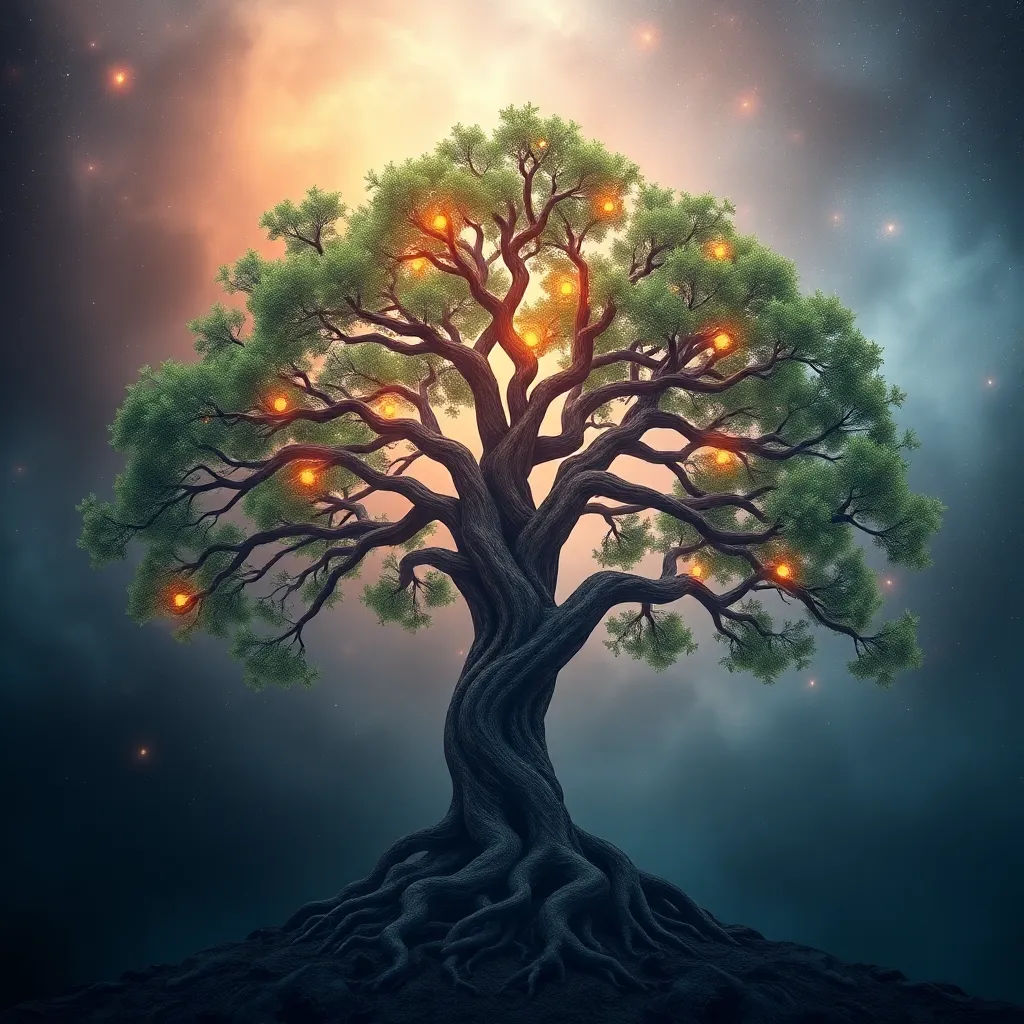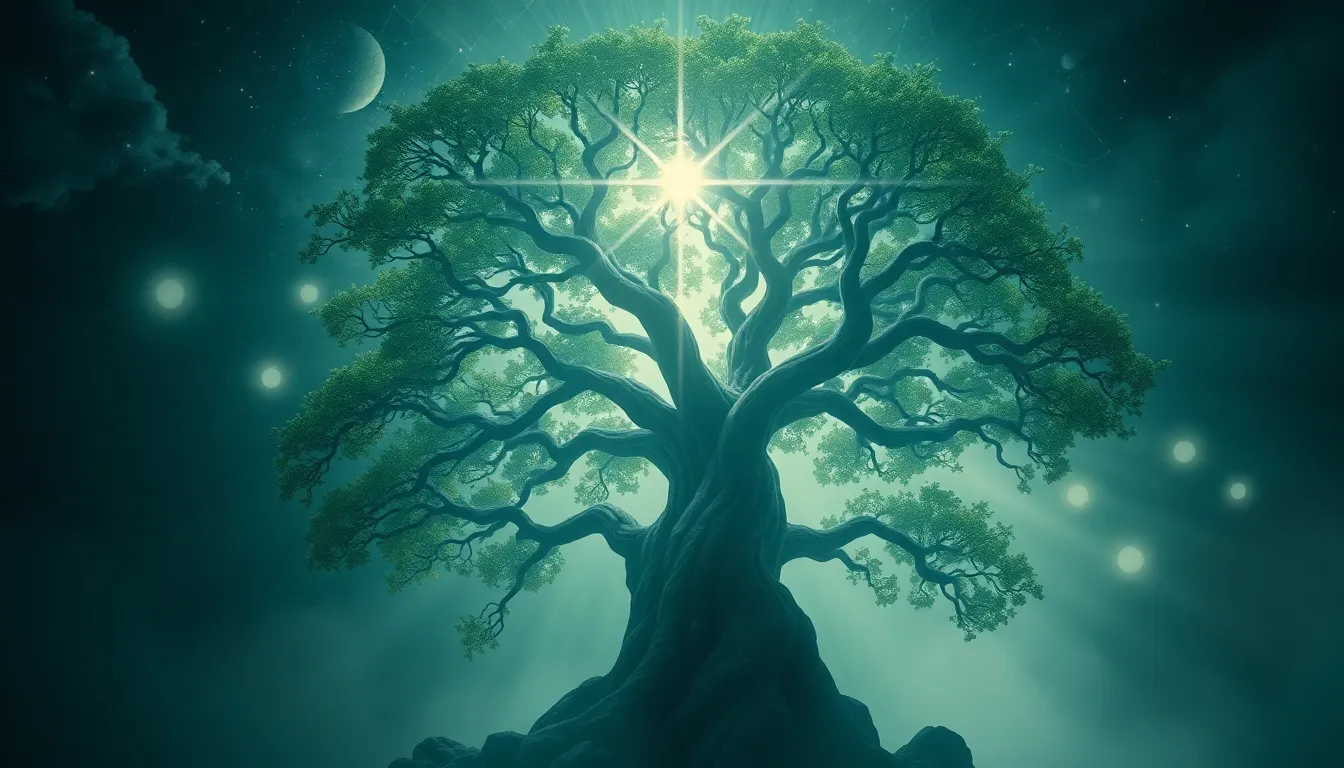The World Tree in Psychology: Understanding the Archetypal Symbol
I. Introduction
The World Tree archetype is a profound symbol found in various mythologies around the globe, representing the interconnectedness of life, the cyclical nature of existence, and the journey of self-discovery. In psychology, symbols play a crucial role in understanding the human psyche, as they encapsulate complex ideas and emotions that can be explored in therapeutic contexts.
This article aims to delve into the significance of the World Tree archetype in psychological theory and practice, exploring its historical roots, psychological interpretations, and applications in modern therapeutic settings.
II. Historical Context
The concept of the World Tree has its origins in various cultures, each attributing unique meanings and symbolism to this archetype. Here are some key points regarding its historical context:
- Origins: The World Tree appears in ancient mythologies, such as Yggdrasil in Norse mythology, which connects the nine worlds, and the Tree of Life in Mesopotamian myths, symbolizing regeneration and immortality.
- Mythological Representations: Civilizations like the Maya viewed the World Tree as a symbol of the universe’s structure, linking the heavens, earth, and underworld. Similarly, in Hindu mythology, the Ashvattha tree represents the eternal and the cyclical nature of life.
- Evolution in Psychological Theory: With the advent of psychological theories, especially those proposed by Carl Jung, the World Tree has been interpreted as an archetype reflecting the collective unconscious and the shared human experience.
III. The World Tree as an Archetype
In Jungian psychology, archetypes are innate, universal symbols that shape human thoughts, behaviors, and experiences. The World Tree serves as a significant archetype for several reasons:
- Interconnectedness: It symbolizes the interconnectedness of all beings, emphasizing the importance of relationships and the web of life.
- Symbolic Meanings: The World Tree embodies themes of growth, stability, and the cycle of life and death. It represents the journey of the self, where one must navigate through the roots, trunk, and branches to achieve wholeness.
IV. Psychological Interpretations
The World Tree holds profound implications for personal development and self-understanding. Here are some interpretations:
- Personal Development: Engaging with the World Tree archetype can facilitate personal growth. Individuals may visualize their journey through various stages of life, reflecting on their roots (heritage), trunk (development), and branches (future aspirations).
- Collective Unconscious: The World Tree can help individuals connect with the collective unconscious, a concept introduced by Jung, representing shared memories and archetypes across humanity.
- Dream Analysis: In dream analysis, the World Tree may appear as a symbol of guidance, indicating the dreamer’s path in life and the need to explore their deeper self.
V. The World Tree in Modern Therapy
In contemporary therapeutic practices, the World Tree archetype is utilized in various innovative ways:
- Narrative Therapy: Clients may create personal narratives using the World Tree as a metaphor, exploring their life stories and identifying growth areas.
- Creative Expression: Art therapy techniques often incorporate the World Tree, allowing clients to express their emotions and experiences through visual representations.
- Case Studies: Numerous case studies have demonstrated the effectiveness of the World Tree symbol in therapy, where clients report increased self-awareness and emotional healing through its use.
VI. Comparative Analysis
When examining the World Tree archetype, it is essential to consider similar symbols in different psychological frameworks:
- Similar Symbols: Other symbols like the Tree of Life in various traditions (Judaism, Kabbalah) also represent growth and interconnectedness but may carry different cultural implications.
- Cross-Cultural Interpretations: While the World Tree emphasizes universal themes of life and growth, different cultures interpret its significance within their unique worldviews, influencing therapeutic approaches.
VII. Critiques and Limitations
Despite its rich symbolic significance, the reliance on archetypal symbols like the World Tree faces critiques and limitations:
- Criticism: Some scholars argue that an overreliance on archetypes can lead to a reductionist view of complex psychological experiences.
- Limitations: The interpretation of the World Tree may vary significantly among individuals, making its application in therapy challenging.
- Oversimplification Risk: There is a danger of oversimplifying personal experiences by forcing them into archetypal frameworks, potentially overlooking individual nuances.
VIII. Conclusion
In summary, the World Tree archetype serves as a powerful symbol in psychology, representing interconnectedness, personal growth, and the cyclical nature of life. Its relevance to contemporary psychological practice is evident in various therapeutic applications, from narrative therapy to creative expression. As we continue to explore the implications of such archetypal symbols, future research may uncover deeper insights into their role in understanding the human psyche and facilitating healing.




